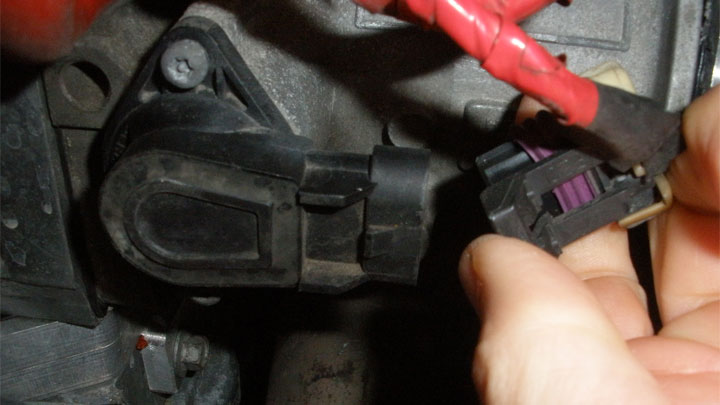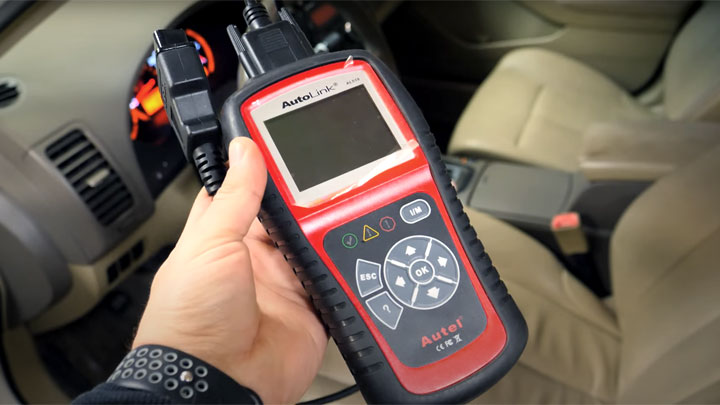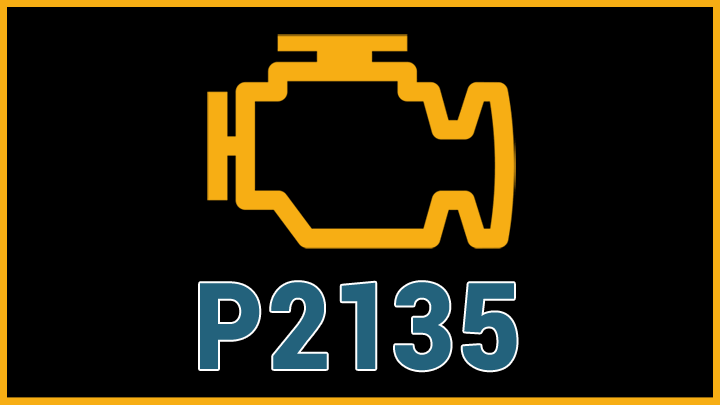Last Updated on July 22, 2022
Today’s vehicles are nothing short of highly complex when compared to those of previous generations. Modern vehicles rely upon a series of sensors and circuits, as well as several control modules, to facilitate proper operation.
In most cases, these electronics are now tasked with completing many of the same jobs that were once controlled in a mechanical fashion.
This level of development has been responsible for a sharp rise in the operating efficiency of most vehicles, likewise bolstering their reliability. However, this is not to say that the occasional electronic fault does not present itself. In fact, various issues of this nature can, and do, arise from time to time.
A record of such issues is logged by a vehicle’s ECM/PCM and can be reviewed with the help of a scan tool. Each event is registered as a DTC, or diagnostic trouble code, such as P2135 which describes an issue within a vehicle’s “drive-by-wire” throttle system.
This DTC is an excellent example of how electronic control devices found on vehicles do experience the occasional problem.
Read on to learn more about DTC P2135, as well as how to remedy such issues, should they arise at a later date.
What Does Code P2135 Mean?
DTC P2135 indicates that the voltage present at a vehicle’s APP (accelerator pedal sensor), and that found at the TPS (throttle position sensor), are not in agreement.
As such, a vehicle’s PCM determines that the engine’s throttle position is not as it should be based upon user demands. However, to fully understand the gravity of this situation, one must first grasp the concept of electronic throttle control.
Up until the 1990’s, throttle plate actuation was controlled by cable, attached directly to the accelerator pedal itself. When a driver depressed the accelerator pedal, the throttle plate would pivot on its axis.
Therefore, pedal-to-throttle plate response had little chance of growing out of sync, as the length of the cable connecting the two was not variable.
Over the last several decades, manufacturers have switched to the use of drive-by-wire throttle systems, which rely upon voltage delivery to facilitate operation. There is now no such thing as a standard throttle cable.
Instead, a correlated voltage is delivered to the engine’s throttle body by the vehicle’s PCM (powertrain control module), based upon input from the APP.
However, if the correlation between the voltages found at the system’s TPS and APP fall outside of the anticipated range, DTC P2135 is stored. In the majority of cases, this lack of correlation must exceed 2-seconds in length, before an active DTC is stored.
When a code of this nature is stored, several adverse drivability-related symptoms often arise.
Related: DTC P0121, DTC P0122, DTC P0123, DTC P2138
Symptoms of Code P2135

Diagnostic trouble code P2135 is often accompanied by a number of additional symptoms. While not all of these symptoms are present in every case, they tend to be quite prevalent and widely observed.
The following are the most common symptoms associated with DTC P2135.
- Check engine light
- Starting difficulties
- Lack of throttle response
- Intermittent stalling
- Sudden loss of power
Causes of Code P2135

Many individual conditions can serve as the underlying cause of DTC P2135. While certain conditions are more prevalent than others, it pays to understand each possible cause of this issue.
The following are the most common causes of DTC P2135.
- Faulty, burnt, or corroded throttle body pigtail
- Wiring short to ground
- Inoperable APP sensor or wiring
- Throttle plate movement obstructed
- Faulty throttle body/TPS
Is Code P2135 Serious?

As with any throttle-related issue, DTC P2135 should be taken extremely seriously.
The presence of this code indicates that your engine’s throttle is not reacting as it should, leading to a potentially dangerous set of circumstances. At the very least, your vehicle’s drivability is almost sure to suffer, thereby presenting a significant headache.
In many cases, DTC P2135 triggers a “reduced power” mode, in which a vehicle’s output and top speed are severely limited. The true danger of this situation is that one never knows when a vehicle will abruptly enter this limp mode. Such issues can just as easily occur while cruising at interstate speeds, as at startup.
In any event, DTC P2135 should be addressed as quickly as possible. Doing so will avoid a wealth of secondary issues, while also mitigating some potential dangers.
If you do not feel comfortable addressing such issues on your own, an appointment should be made with a trusted service center at the first available opportunity.
How to Fix Code P2135

The following steps can be used to guide you through the process of diagnosing the root cause of your vehicle’s P2135 DTC. As always, consult factory specific service literature for your particular vehicle, before attempting any detailed repair.
#1 – Check for Additional DTCs
Before beginning the diagnostic process, check for the presence of any additional diagnostic trouble codes. All additional DTCs should be thoroughly diagnosed before continuing.
#2 – Check TSBs
Next, check for any technical service bulletins for your specific vehicle, which pertain to the problem at hand. If such a TSB exists, follow the instructions therein.
#3 – Visually Inspect TPS/APP Wiring
You will now carefully inspect the wiring pigtail and connector for your vehicle’s TPS and APP. All connectors should be free of corrosion or bent pins. Likewise, all wiring should be free of fraying or other obvious damage. Repair these items as necessary.
#4 – Check Voltage at TPS/APP
Voltage at both the TPS and APP should be checked with the use of a multimeter, per manufacturer specification. All readings taken from such tests should fall within operational ranges designated by your vehicle’s manufacturer.
Voltages should sweep smoothly as the vehicle’s accelerator pedal is slowly depressed.
#5 – Replace TPS if Necessary
If proper voltage is displayed at the wiring harness’ connection to the throttle body, yet DTC P2135 persists, a system re-learn should be conducted. The procedure for accomplishing this can be sourced from your vehicle’s manufacturer.
If this does not alleviate your vehicle’s issue, throttle body replacement will be required.




